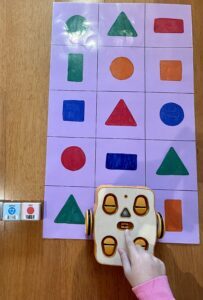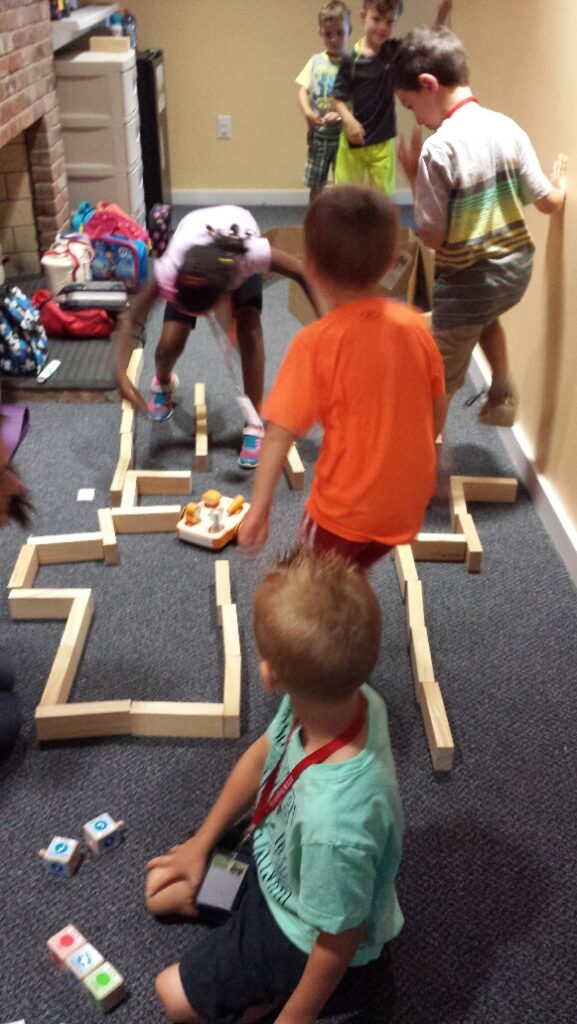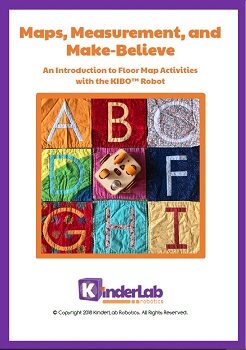How to Use Robots to Teach Coding
Robotics offer a unique way to teach coding to children, even the youngest of learners. Early childhood is a wonderful time to spark kids’ interest in coding, robotics, and engineering. Young children are curious about the world around them, and today that world includes technology. But how can educators use robots to teach coding in the hectic and busy classrooms and learning spaces to promote positive, creative, and educational engagement?
One robot that is easy for educators to teach coding and for young learners to learn coding is the screen-free KIBO robot. KIBO offers an inviting, engaging platform for children to start their journey into creating with code through physical wooden programming blocks. This physical way to code gives children control over the robot’s movements, sounds, and sensors, allowing them to express their imaginations with code.
So, can kids learn coding with robotics this young? Yes! Here are three simple ways you can use robots to teach coding, computer science, engineering, STEAM skills, and computational thinking to young children in any learning environment..
3 Easy Ways to Use Robots to Teach Coding
[# 1] Coding Teaches the Literacy of the 21st Century
Not Not every child needs to become a computer programmer, but coding gives children the tools to create and participate in a culture, society, and working world increasingly structured by computers. Teaching children to code gives them fluency in a new set of tools for self-expression. Regardless of the child’s age, you can use coding robots from 4 year olds to 7 year olds to even 10 year olds. Keep reading to learn some easy ways to use robots to teach coding to elementary school students.

Let’s tell a story!
In this storytelling example, a child creates a character, such as Little Red Riding Hood, and explores this character’s world with KIBO. They develop a coding sequence with KIBO’s programming blocks to reenact the story through code as she navigates through the forest. After scanning in the code into KIBO, they press the “go” button, and the story comes alive based on that coding sequence. Additionally, they can use KIBO’s voice recording sensor with their own voice to retell the story.
Related Post: A Robot to Think With: How to Teach About AI in Early Childhood
[# 2] Coding Develops Computational Thinking Skills
How do you solve a problem in a structured way? With computational thinking, you model the problem, break it down into smaller sequential steps, invent solutions, and test them out. The term “computational thinking” grew out of work in the 1980s by Seymour Papert, a pioneer in teaching children to create with code.

Let’s answer a math problem with robots!
In this math example, a child answers a math question, then develops a sequence for their robot to move to the correct answer on a floor map. They do this by assembling the KIBO programming blocks into a coding program. They scan the blocks with KIBO’s barcode scanner, one by one in sequence. Their KIBO robot will then navigate to the right answer.
[# 3] Robotics Makes Coding Tangible and Concrete… and Screen-Free!
Young children think and learn best when moving, playing, building, and engaging with concrete objects. Traditional coding is often screen-based and abstract. But with robotics, the robot moves and reacts based solely on the instructions the children give it. The robot is an “object to think with,” in Seymour Papert’s phrasing. Studies with KIBO demonstrate that children benefit from connecting programming concepts to concrete, physical objects, reinforcing learning in an age-appropriate way.

Let’s navigate through a maze!
In this playful example, children build an obstacle course with building materials and arts and crafts. Collaboratively they build a coding sequence for their robot with the programming wooden blocks to decided how they will move their “vehicle” through the maze and get around the obstacles. Will their KIBO robot be able to get through the maze with their code?
These are just three ways you can use robots to teach coding to your young learners. With some trial and error, and with some arts and crafts, building materials, and a little imagination, KIBO becomes a platform for imaginative play, sturdy building and learning to engage with abstract concepts like coding.
Related Post: How Can Early Childhood Educators Use Hour of Code to Teach Computer Programming to Young Kids

Want More Activities with Robots to Teach Coding?
Want to learn more about robots to teach coding? For some other ideas of the ways to use KIBO coding robots in the classroom, download the free Floor Map Curriculum, Maps, Measurement, and Make-Believe curriculum which offers 8 playful and floor map activities.
In addition, you can see educator submitted activities to get some ideas of how KIBO is being used in their classrooms to teach robot coding to their elementary learners!
Ready to bring KIBO robots to teach coding to your young learners? Check out the KIBO kits and KIBO classroom packages (including curriculum and training).

Meet KIBO, the Screen-free Educational STEAM Robot
What is the best robot to teach coding? KIBO! KIBO, the learning robot designed specifically for elementary-aged kids, offers an inviting, engaging platform for young children to start their journey into creating with code in a fun and creative way. KIBO’s block-based coding language gives children control over the robot’s movements, sounds, and sensors, allowing them to express their imaginations with code. The KIBO curriculum for educators also teaches children to tell stories, create characters, and explore the world around them through code. KIBO is the number one choice in screen-free coding for kids – trusted by more parents and schools to introduce today’s youth to the wonders of technology and robotics.



















